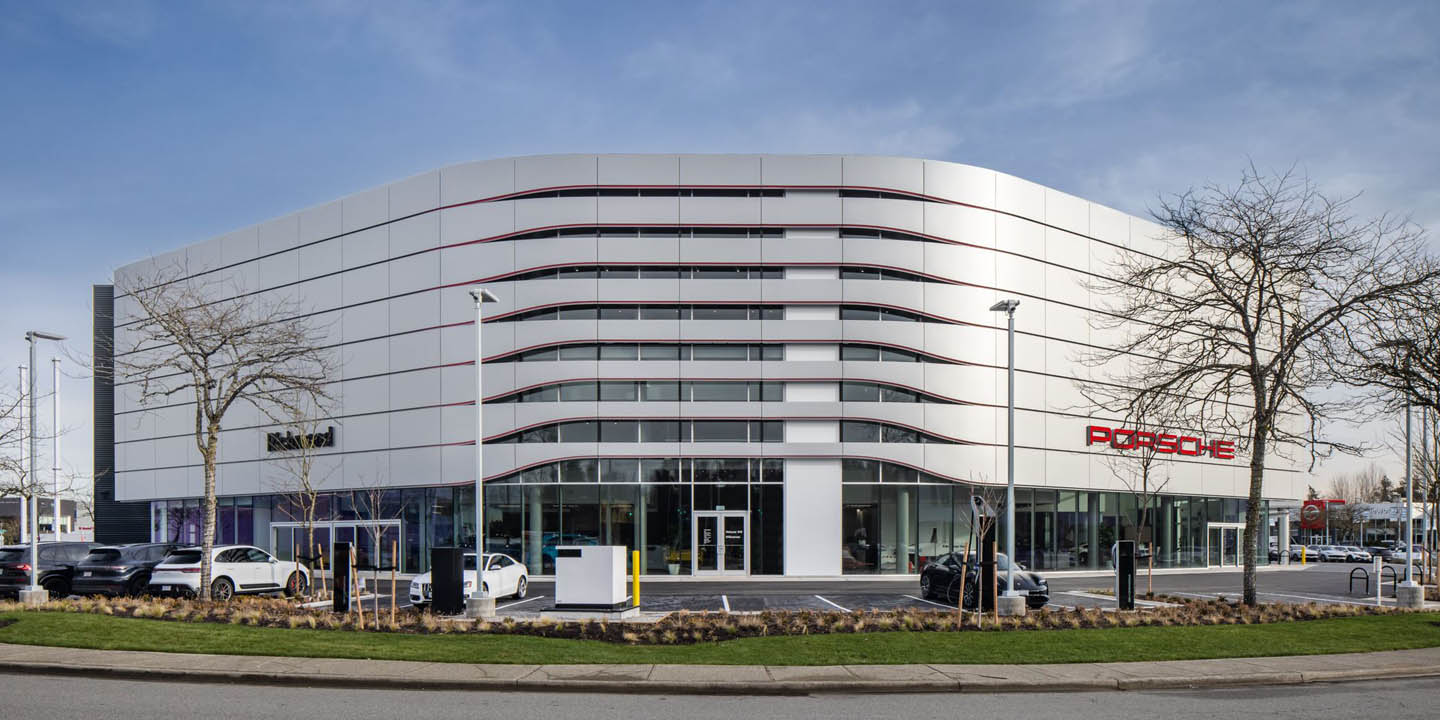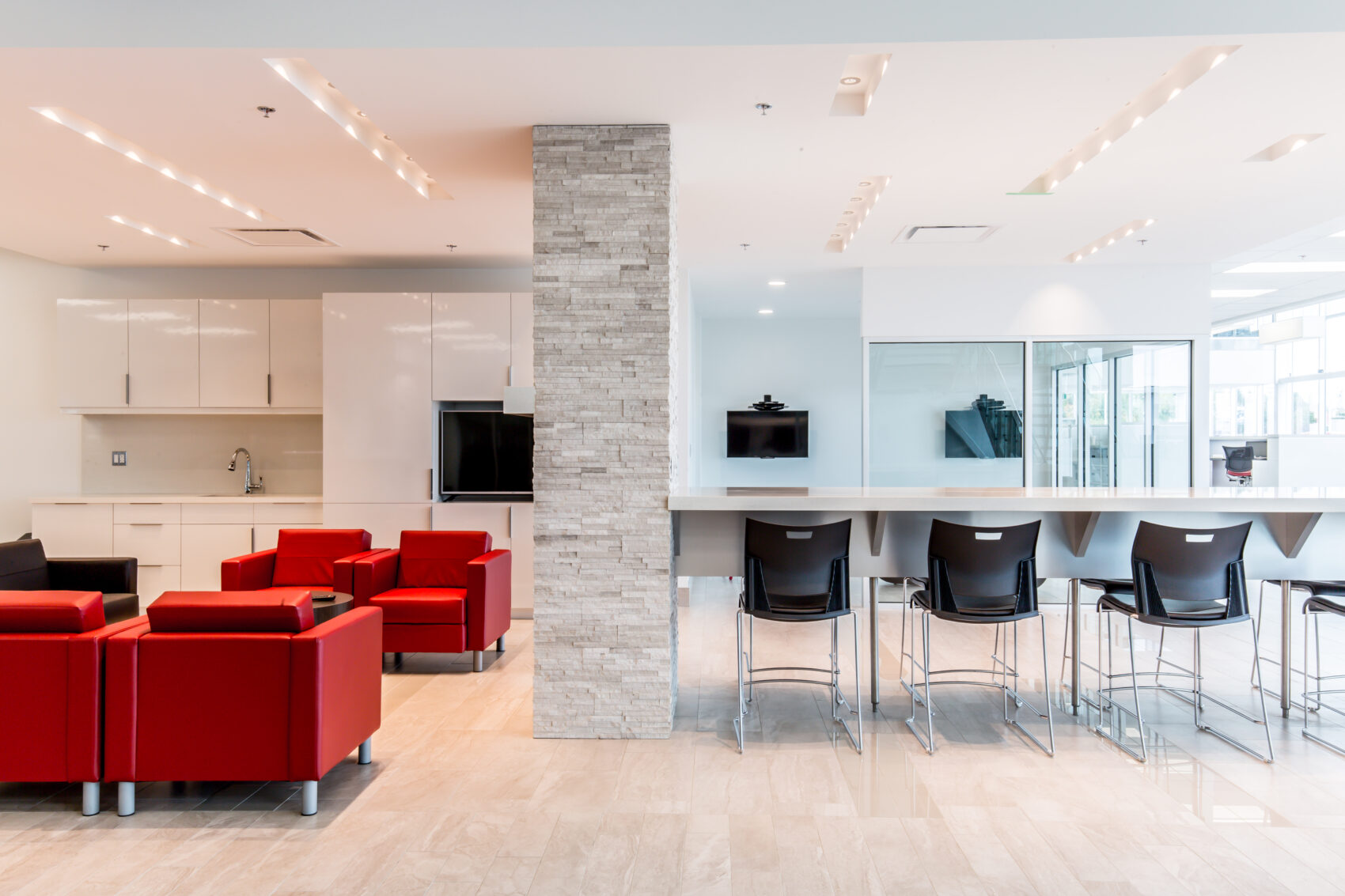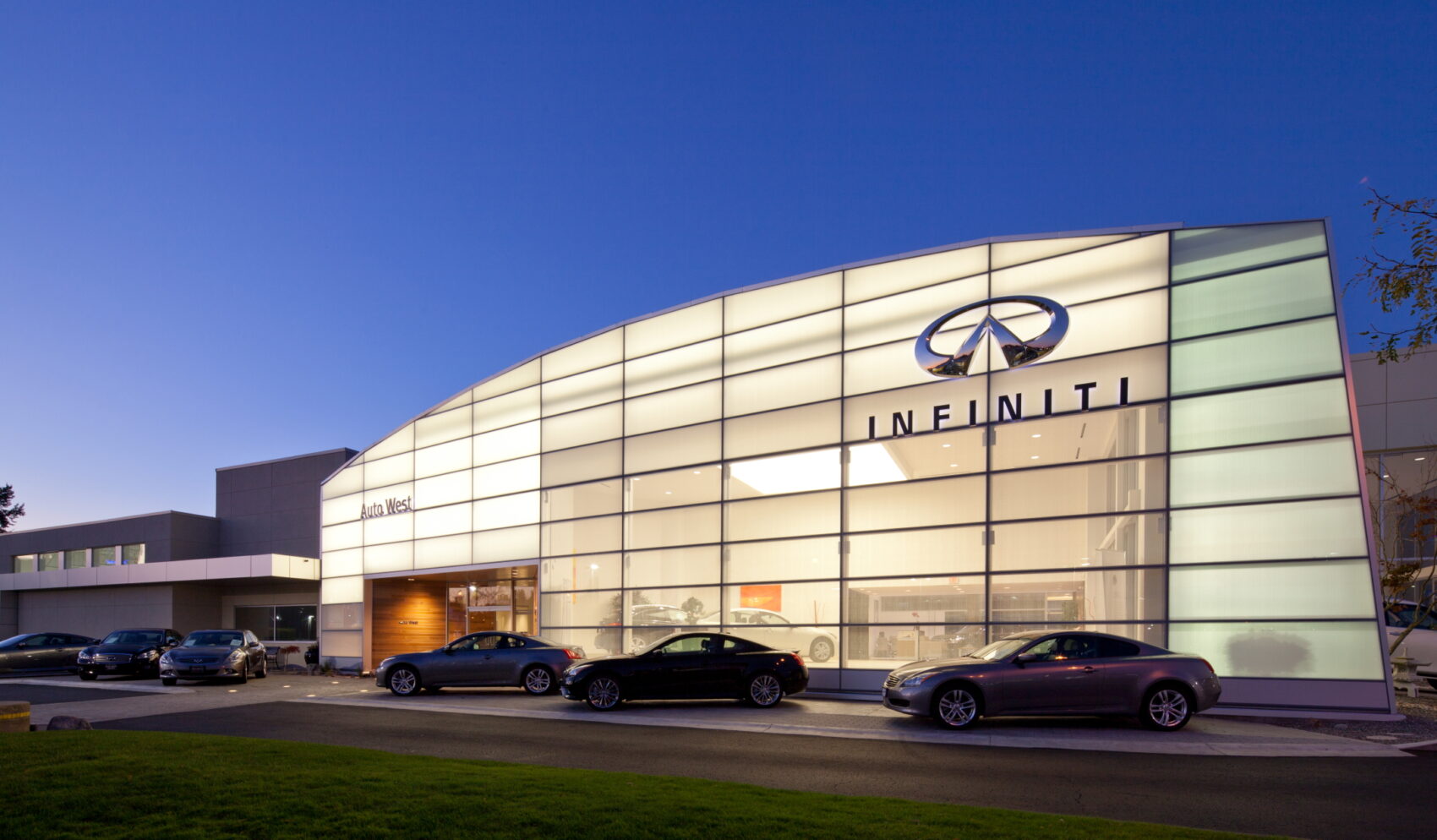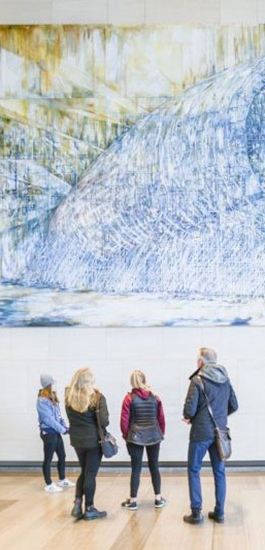Maximizing dealership profits, through design
Automotive dealerships are challenged. Overhead is higher than ever before, in part due to rising real estate costs and fluctuating inventory prices reducing their profits significantly. These slim profit margins translate to an increased reliance on long-term client relationships as these repeat customers provide steady revenue and improved profitability. General Motors has reported that by experiencing a 1% increase in customer retention, this translates to $700 million in additional annual revenue.
At a time when brand loyalty and long-term customer retention is more important than ever, customers are experiencing a substantial shift in their options and procurement experience. They are also demanding a seamless and heightened customer service experience – and dealerships need to deliver accordingly to stay relevant. Dealership design has a tremendous role to play in initiating and nurturing these important customer relationships, converting the dealership from a high-pressure sales environment to an enjoyable place to visit.
Drawing on inspiration from the high-end retail industry, successful dealerships are now rolling out the figurative red carpet, making their customers feel valued and special, reinforcing a sense of pride, and ultimately building a brand loyalty that will last for decades. It all starts with an exceptional design strategy.
Blending big brand expectations with local context
There are two key entities in the automotive sales transaction: the Original Equipment Manufacturer (OEM) – responsible for producing and designing vehicles (ie. Porsche); and the dealership – responsible for car sales (ie. Richmond Porsche).
A new dealership design starts with a Design Criteria Document (DCD), a guide developed by the OEM and an architect that outlines design concepts, parameters and facility functionality while ensuring brand standards and consistency are achieved at the dealership level. OEM’s invest considerable time, resources, and expertise into understanding their customer base using retail analytics and this data is then leveraged to inform the DCD. The DCD places greater constraints on design options at the dealership level.
By collaborating with a local architect with deep sector expertise, a dealership can develop a design strategy that both conforms to the DCD and provides an exceptional experience custom to the local customer base and real estate environment. Good design strategy for dealerships translates to a unique and memorable experience which has an impact on customers who are navigating what is typically their second most important purchase – after their home.
A design strategy that supports the modern customer sales journey
Kasian works with dealerships to create an environment that nurtures lifelong relationships between an automotive brand and their clientele, helping them stand out from the crowd. This is done by incorporating consumer-centric design trends, honouring and reinforcing branding and customer requirements, and bringing in a deep understanding of the local context.
The following are various elements of dealership design strategies that support the demands of the modern customer:
Standing out by bringing the brand to life
Through thoughtful design and the utilization of innovative graphics and engaging materials, Kasian creates spaces that capture the unique energy and aesthetics of each brand.
Dealership designs feature distinctive color palettes, quality signage, and strategically placed visuals that communicate each dealership’s distinct messaging. When done right, this visual experience can be a powerful tool for creating emotional connections and reinforcing loyalty.
Consider the approach that Kasian took with the Richmond Porsche Centre. Sitting in a prominent location at the main entry to the Richmond Auto Mall, Porsche wanted to take full advantage of the exposure by ‘celebrating the entry’. Kasian’s ‘design thinking’ led to an evolution of the Porsche dealership, with initial sketches founded on the organically smooth lines of Porsche’s car design history, overlaid onto the surface of the exterior building block.

Local context that resonates with customers
Dealership design is both a business and an art. Understanding the local context of the prospective clientele is key to successfully striking the right balance.
Regional demographics, personal preferences, and trends help inform decisions about layout, fixtures, and décor. Additionally, being aware of local climates and weather patterns allows dealerships to be designed in ways that are sympathetic to their environment while remaining comfortable for customers year-round. Understanding the locale’s history and influences, helps dealerships create inviting spaces that reflect the culture and values that potential customers respect.
Designing for a superior customer experience
There is a growing desire within the automotive industry for dealerships to engage with their customers as frequently as possible. The dealership-customer relationship no longer ends when the vehicle is driven off the lot. With the consumer experience top of mind, two areas of the dealership have emerged as most critical in supporting this enhanced client engagement: the customer lounge and the service area.

The former cubicle-style meeting spaces where dealership staff would apply high-pressure sales tactics have been replaced by inviting café style areas that accommodate for casual conversations. Modern dealerships favour open floor plans with welcoming showrooms and displays that are customized to their individual consumer demographics, providing a more personalized experience.
Going above and beyond
Dealerships are also creating exquisitely designed spaces and experiences that keep customers in-house while their vehicles are being serviced for two – three hours. Value-added amenities such as pleasant lounging spaces, coffee shops, comfortable workstations, virtual golf, and salons are all becoming standard in dealerships to enhance the customer experience. It is common practice for dealerships to also build in retail space that carries manufacturer-branded clothing, golf equipment, and accessories.
Addressing the real estate pricing challenge
Mixed-use developments are becoming the go-to model for new dealerships in response to rising real estate costs, particularly in larger urban centres. To maximize site potential, density, and dealership profits, dealer owners are evaluating options that include vertical development with an office or residential tower with the dealership at the podium level. We’ve also seen dealerships integrating with malls in recent years as shopping centres explore innovative ways to fill vacancies. The world’s largest in-mall service dealership, the West Edmonton Mall Toyota, opened up in 2021.
Providing the latest in service centre design
Servicing has always been a primary revenue driver – dealerships make more profit on the maintenance and repair of vehicles than they do on car sales. As such, service loyalty is a critical component of nurturing customer relationships. With the cost of real estate increasing, OEMs and dealers are exploring separating operations from service facilities that are not customer-facing and locating them in lower-cost surrounding areas.
In tandem with this, automobile servicing has become more state-of-the-art and specialized and has evolved to include highly skilled technicians working in a ‘lab-like’ environment. While working with a range of dealerships, Kasian has developed a well-rounded understanding of operational flow, service department operations and strategies, and optimal placement of servicing equipment.
Read Next

ARTICLE
The Last Mile: e-commerce and industrial development in changing times
By: Dean Benvenuto , Dragana Perusinovic
Article
Personal achievement is just one part of your immigrant Story
By: Aziz Bootwala
Kasian in the media
The built environment and the future of design
By: Martin Spreer
We’d love to get to know you
Get in touch
"*" indicates required fields
Get in touch
Share




